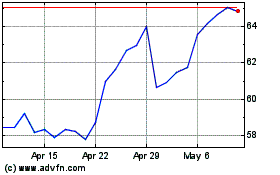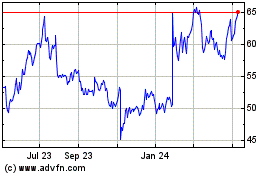- Additional Proxy Soliciting Materials (definitive) (DEFA14A)
January 20 2012 - 4:06PM
Edgar (US Regulatory)
|
UNITED STATES
|
|
SECURITIES AND EXCHANGE COMMISSION
|
|
Washington, D.C. 20549
|
|
|
|
SCHEDULE 14A
|
|
|
|
Proxy Statement Pursuant to Section 14(a) of
the Securities Exchange Act of 1934 (Amendment No. )
|
|
|
|
Filed by the Registrant
x
|
|
|
|
Filed by a Party other than the Registrant
o
|
|
|
|
Check the appropriate box:
|
|
o
|
Preliminary Proxy Statement
|
|
o
|
Confidential, for Use of the Commission Only (as permitted by Rule 14a-6(e)(2))
|
|
o
|
Definitive Proxy Statement
|
|
x
|
Definitive Additional Materials
|
|
o
|
Soliciting Material Pursuant to §240.14a-12
|
|
|
|
Sanmina-SCI Corporation
|
|
(Name of Registrant as Specified In Its Charter)
|
|
|
|
|
|
(Name of Person(s) Filing Proxy Statement, if other than the Registrant)
|
|
|
|
Payment of Filing Fee (Check the appropriate box):
|
|
x
|
No fee required.
|
|
o
|
Fee computed on table below per Exchange Act Rules 14a-6(i)(1) and 0-11.
|
|
|
(1)
|
Title of each class of securities to which transaction applies:
|
|
|
|
|
|
|
(2)
|
Aggregate number of securities to which transaction applies:
|
|
|
|
|
|
|
(3)
|
Per unit price or other underlying value of transaction computed pursuant to Exchange Act Rule 0-11 (set forth the amount on which the filing fee is calculated and state how it was determined):
|
|
|
|
|
|
|
(4)
|
Proposed maximum aggregate value of transaction:
|
|
|
|
|
|
|
(5)
|
Total fee paid:
|
|
|
|
|
|
o
|
Fee paid previously with preliminary materials.
|
|
o
|
Check box if any part of the fee is offset as provided by Exchange Act Rule 0-11(a)(2) and identify the filing for which the offsetting fee was paid previously. Identify the previous filing by registration statement number, or the Form or Schedule and the date of its filing.
|
|
|
(1)
|
Amount Previously Paid:
|
|
|
|
|
|
|
(2)
|
Form, Schedule or Registration Statement No.:
|
|
|
|
|
|
|
(3)
|
Filing Party:
|
|
|
|
|
|
|
(4)
|
Date Filed:
|
|
|
|
|
|
|
|
|
|
[FORM OF LETTER SENT TO CERTAIN STOCKHOLDERS OF THE COMPANY]

Dear Stockholder:
I am writing to solicit your vote in favor of the 2,500,000 share increase of our 2009 Incentive Plan described in the proxy statement for our Annual Meeting of Stockholders to be held on February 13, 2012 for the following reasons:
Employee Retention and Alignment
Increasing the shares available in the plan is very important since we rely upon employee equity grants to attract and retain the key operational and executive talent needed to grow our business. In particular, stock compensation improves the alignment between employees and stockholders by giving employees a financial incentive to increase stockholder value, which benefits all stockholders. Granting employee equity has also helps reduce our cash employee compensation costs. The plan is a broad-based plan and all of our worldwide employees are eligible to receive grants. We need stockholders to approve the increase because, without it, we anticipate a probable depletion of the available employee share pool sometime during 2012. This would significantly impact our ability to retain our current high performing employees and to make the anticipated future key hires needed to help us win higher-margin business and create sustainable growth. Without a sufficient employee equity pool, we could lose employees and applicants to competitors unless we significantly increase our cash compensation. Relying solely on cash compensation would not only fail to align our employees’ interests with those of stockholders, it would consume cash that could be used for business expansion, strategic initiatives and debt reduction.
Our Burn Rate and Overhang is Reasonable Compared to our Peers
·
Our net annual burn rate (grants less cancelations due to terminations) of 2.08% last year was comparable to the median for our peer group (Flextronics, Jabil, Celestica, Benchmark and Plexus) of 1.61%.
·
Our overhang was negatively impacted by our stock repurchase activity in 2009 which decreased the number of outstanding shares by 10.1 million shares, or 11%. While such actions represented an investment in the Company and returned money to stockholders, it also increased our overhang by approximately two percentage points.
·
Our overhang of 18.7% is slightly higher is the 16.4% median of our peer group, due in large part to the number of substantially out-of-the-money grants previously issued. Without these grants, which have an exercise price of $18.33 or higher and are therefore unlikely to be exercised in the near or medium term, our overhang falls to 14.7%.
2
The Amount of our Proposed Increase is Reasonable
We are asking for approval of a number of shares that we expect to be sufficient to attract and retain key employees for a 12 to 18 month period. Therefore, we anticipate stockholders will have a yearly or bi-annual opportunity to determine whether shares should be added to our plan in the future. We believe this approach is more reasonable than asking for a much larger increase that could be used over a substantial period of time with less stockholder oversight.
A Significant Number of Outstanding Options Cannot be Returned to the Option Pool for Future Grant
For most companies, if an employee terminates employment, his or her unvested options are returned to the pool for future grants. This practice minimizes the number of new shares companies must ask their stockholders to approve. However, in the case of Sanmina, 43% of our total outstanding options were granted under our 1999 Stock Plan. Since this plan expired in 2009, these options will not be returned to the plan and will never again be available for future grants. This deprives us of a key source of employee equity that is available to our peer companies.
We Use Best Practices to Ensure Employee Equity Grants do not Adversely Affect our Stockholders
The terms of the 2009 Incentive Plan are in line with industry best practices and the guidelines of Institutional Shareholder Services (ISS), including the following:
·
No repricing of options or stock appreciation rights without stockholder approval;
·
Shares used to pay taxes or an option’s exercise price can’t be reissued to employees as new grants;
·
Options and other awards won’t accelerate if we are acquired;
·
Since full-value awards such as restricted stock units are more valuable (and therefore more costly to stockholders) than options on a share-for-share basis, we deplete our pool at a higher rate for restricted stock units than options (1.36 to one).
Our Financial Performance has Substantially Improved, Justifying a Vote in Favor of a Reasonable Increase in Employee Equity
Our financial performance has significantly improved between 2009 and 2011. This level of performance justifies the addition of shares to our stock plan so that we can attract and retain the key talent necessary to continue to improve our financial performance.
3
Notably:
·
Revenue increased 22% from 2009 to 2010 and 4.5% from 2010 to 2011, demonstrating our growth potential even during difficult economic times;
·
Non-GAAP gross and operating margins remained stable in spite of a material decline in defense and aerospace and optical modules business, which, as higher margin businesses, contribute disproportionately to our consolidated margins;
·
Non-GAAP earnings increased by $2.16 per share between 2009 and 2011 and were up 26.2% or $0.34 per share, from 2010 to 2011;
·
Non-GAAP EBITDA increased from $178 million in 2009, to $324 million, up 82% in 2010 and up 9% in 2011 to $354 million, demonstrating our improved cost discipline;
·
Cash generated from operations dramatically improved from cash used of $78 million in 2010 to cash generated of $235 million in 2011, reflecting strong growth in the business;
·
In 2011, we redeemed $80 million of debt and refinanced an additional $500 million to both reduce our interest expense and extend our debt maturity profile.
* * *
In summary, we feel it is imperative that we add shares to our plan to attract and retain key employees and the number of shares requested is reasonable in light of our burn rate, overhang and recent financial performance.
We urge you to vote FOR the approval of the reservation of an additional 2,500,000 shares of common stock for issuance under the 2009 Incentive Plan. Your support for this request is greatly appreciated.
|
|
Very truly yours,
|
|
|
|
|
|
/s/ Jure Sola
|
|
|
|
|
|
Jure Sola,
|
|
|
|
|
|
Chairman and Chief Executive Officer
|
4
Sanmina (NASDAQ:SANM)
Historical Stock Chart
From Apr 2024 to May 2024

Sanmina (NASDAQ:SANM)
Historical Stock Chart
From May 2023 to May 2024
